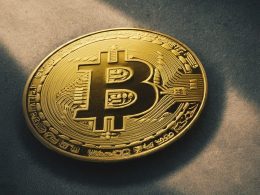The US Federal Reserve’s preferred inflation gauge is accelerating, leading to concerns about the state of the economy. This measure of inflation rose 3.6% in April, which is the highest rate since 2008 and is much higher than the Fed’s target rate of 2%. So what does this mean for the economy? In this article, we explore the implications of this new inflation gauge and look at how it can affect businesses and consumers alike. We will discuss how rising prices could lead to a weakening of purchasing power, as well as potential strategies for dealing with such a scenario. Finally, we delve into why the Fed might be taking steps to try and avoid such an outcome.
What is inflation and how is it measured?
Inflation is the general rise in prices of goods and services in an economy. It is often measured as the percentage change in a price index, such as the Consumer Price Index (CPI). The CPI measures the prices of a basket of goods and services that are representative of what consumers purchase. The CPI is used to measure inflation because it captures changes in the prices of everyday items that households purchase, such as food, clothing, shelter, and transportation.
Inflation can be caused by different things. For example, it can occur when there is too much money chasing too few goods. This can happen when the economy is growing too quickly and there is more demand for goods and services than there is supply. Inflation can also be caused by an increase in costs, such as an increase in the cost of raw materials or wages.
There are two types of inflation: demand-pull inflation and cost-push inflation. Demand-pull inflation occurs when there is too much money chasing too few goods. Cost-push inflation occurs when costs increase, such as when the cost of raw materials or wages increase.
Inflation can have both positive and negative effects on an economy. On one hand, it can lead to higher prices for goods and services, which can hurt consumers’ purchasing power. On the other hand, it can encourage businesses to invest and expand, which can create jobs and boost economic growth.
The Federal Reserve uses a measurement called the
The Federal Reserve’s preferred inflation gauge
The Federal Reserve’s preferred inflation gauge is the Personal Consumption Expenditures (PCE) price index. The PCE price index measures prices of all final goods and services consumed by households. The PCE price index is a key indicator for the Fed because it helps them gauge whether their monetary policy is achieving their dual mandate of stable prices and maximum employment.
In recent years, the Fed has been aiming for an inflation rate of 2% per year. The most recent data shows that the 12-month change in the PCE price index was 2.3% in March 2021. This means that inflation is slightly above the Fed’s target rate.
There are a few possible explanations for why inflation is currently above the Fed’s target rate. One possibility is that the economy is currently operating below its potential and that there is more room for growth before inflationary pressures start to build up. Another possibility is that the Fed’s monetary policy has been too easy in recent years and that this has led to higher inflation expectations among businesses and consumers.
Whatever the reason, higher than expected inflation can have various implications for the economy. If inflation gets too high, it can lead to economic problems such as wage-price spirals and asset bubbles. On the other hand, if inflation remains low, it can cause economic stagnation and deflationary pressures.
The Fed will be closely monitoring developments in inflation and will adjust monetary policy accordingly to ensure that their dual mandate is met over time.
What causes inflation?
Inflation is caused by a variety of factors, but the most common cause is an increase in the money supply. When the money supply increases, prices go up and inflation results. The Fed’s inflation gauge is a measure of the price level of a basket of goods and services in the economy. An acceleration in the inflation gauge means that prices are rising at a faster pace than they were previously. This can be caused by an increase in demand for goods and services, or by a decrease in the supply of goods and services. Either way, an acceleration in the inflation gauge is indicative of higher inflation in the economy.
The effects of inflation
Inflation is a sustained increase in the general price level of goods and services in an economy. Over time, inflation erodes the purchasing power of money, which can lead to higher interest rates and less spending on goods and services.
The Fed’s inflation gauge, known as the personal consumption expenditures (PCE) price index, accelerated in February to its fastest pace since October 2014. The PCE index rose 0.4% in February after rising 0.2% in January. The core PCE index, which excludes food and energy costs, also rose 0.4% last month after a 0.1% increase in January.
The faster pace of inflation will likely be welcomed by Fed officials who have been struggling to reach their 2% inflation target. However, too much inflation could lead to tighter monetary policy from the Fed, which could slow economic growth.
How to protect yourself from inflation
Inflation occurs when the prices of goods and services rise. This can lead to a decrease in purchasing power, as well as an increase in the cost of living. There are several ways to protect yourself from inflation:
-Invest in assets that have the potential to grow in value. This includes things like stocks, real estate, and collectibles.
-Save your money in a high-yield savings account or a short-term certificate of deposit. This will help you keep up with rising prices.
-Make sure you have adequate insurance coverage. This will help offset the effects of inflation on your finances.
-Create a budget and stick to it. This will help you stay mindful of your spending and make adjustments as necessary.
By following these tips, you can protect yourself from the effects of inflation and maintain your financial stability.
Conclusion
In conclusion, the recent spike in the Fed’s inflation gauge is a cause for concern. It suggests that there may be an underlying trend of rising prices and if not addressed could lead to further economic slowdown. As such, it is important for policymakers to take corrective action where necessary in order to ensure that inflation does not spiral out of control. The ultimate goal should be to promote sustainable growth while keeping price increases at manageable levels.











